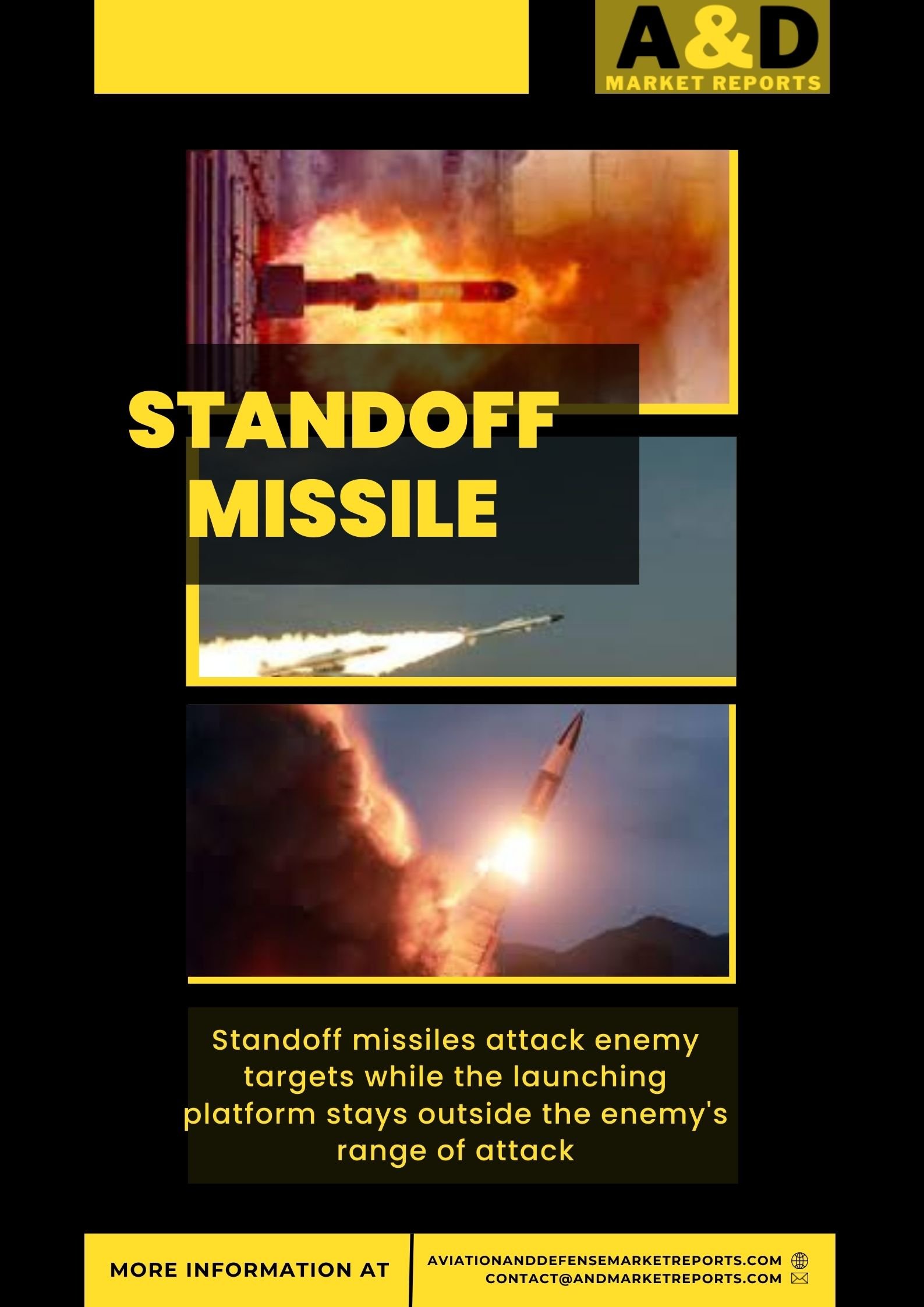Standoff missiles are launched from a sufficient distance from the target area to allow attacking personnel to avoid defence fire. They are typically utilised in offensive operations against land and maritime targets. The name comes from their ability to engage the target while standing outside the range where the defenders are most likely to fight the attacker. Cruise missiles and short-range ballistic missiles are examples of stand-off missiles. A short-range ballistic missile (SRBM) is a missile that has a range of less than 1,000 kilometres (620 miles). Because of the small distances between some nations and their relative low cost and ease of configuration, these missiles have been and will be utilised in past, present and upcoming regional confrontations.
SRBMs are classified as theatre ballistic missiles in current parlance, which encompasses any missile with a range of less than 3,500 kilometres. A cruise missile is a guided missile used against terrestrial or naval targets. The missile remains in the atmosphere and travels at a steady speed for the majority of its flight route. Cruise missiles are meant to deliver a heavy warhead with excellent precision over long distances. Modern cruise missiles may travel at high subsonic, supersonic, or hypersonic speeds, are self-navigating, and can fly at non-ballistic, extremely low altitudes. Short range cruise missiles typically have range of 350-500kms.
Various standoff missiles have been used in the current Russian-Ukraine conflict. They range from anti-ship cruise missile to land attack missiles. Below are few of the standoff missiles used in the current Russia-Ukraine conflict.
NEPTUNE ANTI-SHIP CRUISE MISSILE
The Neptune anti-ship cruise missile is based on the soviet KH-35 anti-ship missiles. The radar-guided missiles may threaten warships up to 180 miles out into the Black Sea if provided with timely targeting data from maritime surveillance capabilities, with a range of up to 310 miles. The Neptune might also be employed for land-attack missions that are guided by inertial navigation systems.
VILKHA-M
Ukraine has also developed a 300-mm Vilkha (“Alder”) rocket-artillery system is based on the Russian BM-30 Smerch, which includes a 75-mile-range Vilkha-M variant (120 km). Each truck can carry up to 12 missiles that can be launched in under a minute and then repositioned in three minutes after firing. The R-224M-series rockets which are being developed with upgraded propellants, are said to have a range of 95 to 124 miles.
3M14 KALIBR
The Russian Navy used the 3M14 Kalibr land attack cruise missile (LACM) during its intervention in the Syrian Civil War, and it has since been established as one of the most important weapons in the service’s firepower. The subsonic 3M14 Kalibr, commonly known as the SS-N-30A Sagaris in the West, is claimed to have a range of 930 to 1,550 miles and carry a 990-pound high-explosive payload. It is believed that multiple Kalibr missiles have been fired by the Russian navy to destroy Ukrainian targets.
ISKANDER-M SHORT RANGE BALLISTIC MISSILES
The Iskander-M system fires 9M723 ballistic missiles with a range of 310 miles, according to official data. It is believe that can fly further. Each missile may carry a payload of up to 1,500 pounds, which is often a high-explosive or sub munition warhead; alternative choices include fuel-air explosives and bunker-busters.
KH-31P
KH-31P is an anti-radiation supersonic standoff missile capable of destroying enemy radar installations. The Kh-31P was designed to counter Western air defence systems like the Patriot, but it can also handle a variety of passive radar seeker heads, including ones that target Soviet-era radar systems like those used by Ukraine. Su-24 and Su-34 strike aircraft, as well as advanced Flanker family members such as the Su-30SM and Su-35S, are all equipped with the missile. Anti-ship variants of the Krypton missile are also available.
Apart from the above mentioned missiles that are used in the current Russia-Ukraine conflict, there are also other standoff missiles that are in service today.
JASSM (Joint Air-to-Surface Standoff Missile)
The JAASM is an air to surface stealthy air launched cruise missile that is currently used by the US Air force. The missile entered into service in 2014. The basic JASSM has a range of about 370 kilometres, while the JASSM-ER has a range of over 1,000 kilometres. Because their airframes are the same, the weapons cannot be identified only on the basis of appearance. A larger internal fuel tank and a more efficient turbofan engine are the main differences. The airframe is angular in appearance, comparable to the Taurus KEPD 350 but more rounded and flowing. The fins and wings of the missile are folded when it is carried by an aircraft, and then unfolded by small explosive charges after it is released.
Harpoon (RGM-84/UGM-84/AGM-84)
Harpoon is a subsonic ant ship cruise missile designed in the United States that has been in service since 1977. Since its debut, numerous variants have been manufactured, including air-, ship-, and sub-launched versions. Multiple improvements have also been made to the Harpoon to improve its range and guidance. Harpoon variants have been marketed to 32 nations. The Harpoon has undergone numerous changes to its hardware and software since its launch in 1977, resulting in numerous versions. The Navy assigned the Harpoon family the following designations in 1973: A=air-launched, R=surface ship-launched, U=underwater-launched, G=surface-attack, M=guided missile.
It is believed that UK is considering supplying Harpoon missiles to Ukraine in order to counter the Russian navy. It is evident that standoff missiles will continue to be a critical component in the modern battlefield and hence will give rise to more lethal missiles in due course of time.
